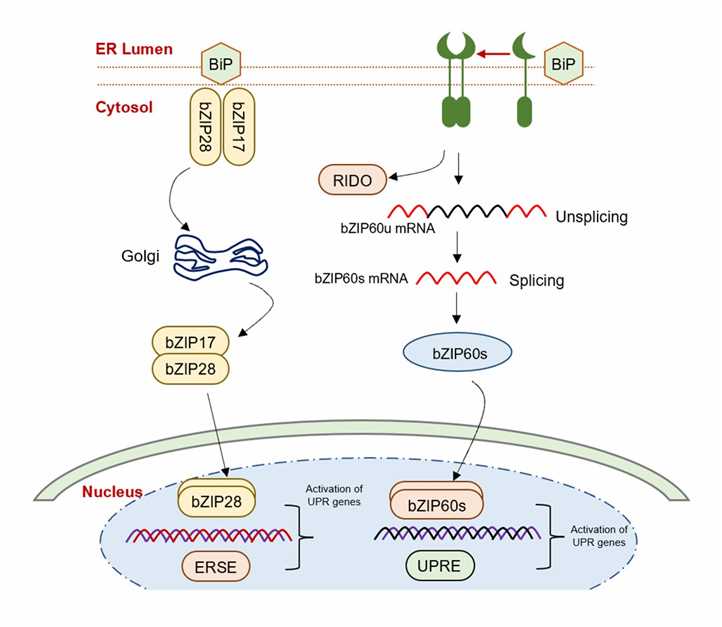Unfolded Protein Response for ER Stress in Plants
The unfolded protein response (UPR) is an intracellular signaling mechanism activated by endoplasmic reticulum (ER) stress designed to restore ER function. ER stress leads to the accumulation of folded proteins in the ER lumen. In addition, the UPR originates from the ER, where it overcomes the ER stress, restores the ER homeostasis, and leads to the ER chaperones and foldases synthesis to attenuate the ER stress. These ER chaperones and foldases are BiP, protein disulfide isomerase, glucose-regulated protein, peptidyl-prolyl isomerase or immunophilins, calnexin, and calreticulin.
Lifeasible is a credible provider of comprehensive, high-quality services for plant science. We provide an advanced and professional platform for the analysis of UPR in response to ER stress according to customer needs. We hope to partner with you to explore new frontiers in ER stress response and accelerate your discovery.
bZIP60-Mediated Pathway in Unfolded Protein Response
- In plants, the bZIP60-mediated pathway is similar to the function of IRE1 in animals. IRE1 is an endoplasmic reticulum membrane localization protein of about 100 kD, mainly composed of ribonuclease and kinase domains. The transcription factor bZIP60 interacts with BiP and dissociates in response to ER stress; then it relieves ER stress.
 Fig.1. Overview of the pathway for UPR signaling.
Fig.1. Overview of the pathway for UPR signaling.
- Lifeasible provides an analysis of bZIP60 relieving ER stress, including inducement of ER stress, analysis of mRNA cleavage, the functional genes in mRNA cleavage, and so on.
- In this process, we detect the removal of a small segment of RNA by using primers on either side of the predicted splice site to determine whether splicing occurs in response to treatment with ER stress. Furthermore, we generated substitution mutations in conserved bases of the bZIP60 mRNA paired loop to show the function of bZIP60 requires mRNA splicing.
bZIP28-Mediated Pathway in Unfolded Protein Response
- In plants, the bZIP28-mediated pathway is similar to the function of ATF6 in animals. ATF6 is a 90 kD protein that localizes to the endoplasmic reticulum membrane. Once stress occurs, ATF6 is activated and plays a role in relieving ER stress by regulating the expression of UPR-related genes or ERAD component genes.
- Lifeasible helps our customers study this process following the movement of GFP-tagged bZIP28 to understand the mobilization from the ER and its release from the Golgi.
NAC-Mediated Pathway in Unfolded Protein Response
- Plant-specific NAC transcription factors are also involved in relieving ER stress.
- We help our customers to discover the ER-stressed genes in the NAC gene family of plants, and their subcellular localization, binding chaperones and foldases in the ER, etc.
With years of experience in biological services, our advanced platforms can help our clients solve various difficulties in research of ER stress response. Lifeasible provides our clients with direct access to our experts and responses to their questions. If you are interested in our services or have any questions, please feel free to contact us or make an online inquiry.
For research or industrial raw materials, not for personal medical use!
 Fig.1. Overview of the pathway for UPR signaling.
Fig.1. Overview of the pathway for UPR signaling.